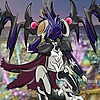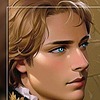HOME | DD
 AgyGuru — Logos in art
AgyGuru — Logos in art

#logos
Published: 2024-03-12 09:36:53 +0000 UTC; Views: 769; Favourites: 28; Downloads: 0
Redirect to original
Description
The term Logos has been used in various philosophical and psychological contexts to represent reason, intellect, or the rational principle in human thought. It can be associated with the capacity for logical thinking, understanding, and order. Beyond its specific philosophical and religious meanings, Logos has taken on symbolic and archetypal significance. It can represent the underlying order and meaning in the world, as well as the principle of harmony and reason.
Studying the concept of Logos can deepen our understanding of the interconnectedness of the universe by highlighting the underlying principles of order, rationality, and unity. The exploration of Logos across various philosophical and religious traditions provides a framework for contemplating the fundamental structures that connect diverse elements within the cosmos. This intellectual pursuit encourages a holistic perspective, fostering an appreciation for the interwoven nature of the universe's components and the potential relationships between them.
Logos in art
Logos often appears as a symbolic element in literature and art. Familiarity with this concept can enrich your interpretation of cultural works and literary texts that incorporate philosophical or religious themes.
The following examples illustrate how Logos, as a symbolic element, can be woven into the fabric of literature and art, contributing depth and layers of meaning to cultural works that explore philosophical or religious themes. The recognition of these symbols enhances the audience's ability to engage with and interpret the profound concepts presented in these creations.
In Hermann Hesse's novel "Siddhartha," the protagonist's journey towards enlightenment and understanding of the interconnectedness of all things reflects the influence of Logos. The novel explores philosophical themes, and the quest for wisdom aligns with the concept of a universal, underlying order.
In Dante Alighieri's "Divine Comedy," the divine order and structure of the universe are central to the narrative. The journey through Hell, Purgatory, and Heaven reflects a symbolic exploration of cosmic order and divine justice, aligning with the concept of Logos in Christian theology.
Paintings such as Raphael's "The School of Athens" or Michelangelo's "The Creation of Adam" incorporate symbolic elements representing divine wisdom and rationality, contributing to a broader understanding of cosmic unity.
The works of Dutch artist M.C. Escher often feature intricate patterns and symmetrical designs that suggest underlying order and mathematical precision. His art, such as "Relativity" or "Waterfall," can be interpreted as visual representations of the harmonious principles associated with Logos.
T.S. Eliot's poem "The Four Quartets" delves into the concept of time, existence, and spiritual enlightenment. The poem incorporates elements that align with Logos, emphasizing the unity of past, present, and future as part of a larger cosmic order.
In the poetry of William Blake, especially in his collection "Songs of Innocence and Experience," the interplay between opposing forces and the search for a higher, unified truth resonates with the philosophical themes akin to Logos. Blake's symbolic language enriches the exploration of cosmic interconnectedness.
Related content
Comments: 2

👍: 1 ⏩: 0

👍: 1 ⏩: 0




















